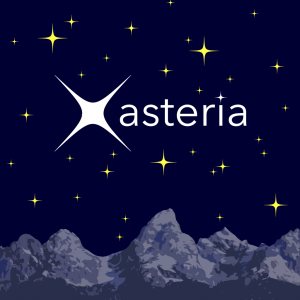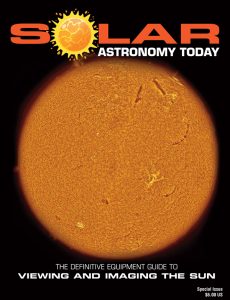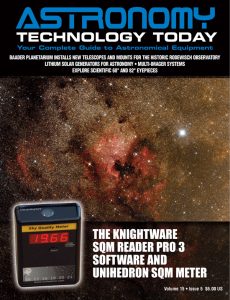The Xasteria astro weather app is an astronomical oriented world weather backed by the 7Timer weather forecast system. The app is offered in two options with Xasteria offered free of charge and Xasteria Plus app as a paid version.
 While designed primarily for nighttime amateur astronomy it is a valuable resource for planning imaging and viewing the Sun.
While designed primarily for nighttime amateur astronomy it is a valuable resource for planning imaging and viewing the Sun.
In its latest update, the Xasteria Plus app has been updated to incorporate a new forecast model. As the publisher note’s, “The Xasteria Plus astro weather app had incorporated Dark Sky to complement the 7Timer astro weather forecast. Apple, who purchased Dark Sky a while ago, retired the service. Xasteria has switched to a new service provided by Apple, which is based on the same technology, while adding some options (cloud layers, extended forecast). In addition, a new source from MET Norway was added, based on the ECMWF model.
With this change Xasteria Plus offers three main forecast options:
– 7Timer (also available in the free Xasteria app): Astronomical forecast with astro-seeing and atmospheric transparency for the next 3 days. Based on the GFS hydrostatic model.
– MET Norway: Based on a non-hydrostatic model, an improvement over hydrostatic models for steep/complex terrain.
– Apple Weather: Forecast with nowcast, making it more accurate for the next few hours.
As mentioned, the Xasteria astro weather app is offered as a free app and is ad-free. The Xasteria Plus app is a paid version and offers the ability to access additional weather sources and includes extra features such as night vision mode, iPhone landscape view, lunar calendar, location manager and more.
The main forecast source for both Xasteria apps, 7Timer, is based on the NOAA/NCEP-based numeric weather model, the Global Forecast System (GFS) and gives you a astro centric forecast for the entire globe with a resolution of about 20km at 3-hour intervals.
Both versions of the Xasteria astro weather app also offers quick access to other weather resources and tools including Clear Sky Charts (for North American users), Clear Outside, Meteoblue, Windy, Astrospheric, Sat24.com, the latest water vapor satellite images and light pollution maps.
Xasteria is available in English, Greek and French. You can learn more here. www.astro.ecuadors.net

 The Sun is more active than it’s been in years and if that’s not enough, we have the Annular Solar Eclipse on October 14, 2023 and the Total Solar Eclipse on April 8, 2024! If you’d like to learn more about the technology behind solar observing, solar imaging and more, you can check out our free publication, “The Definitive Guide to Viewing and Imaging the Sun”. You don’t have to sign up or provide any information, simply click here and enjoy reading!
The Sun is more active than it’s been in years and if that’s not enough, we have the Annular Solar Eclipse on October 14, 2023 and the Total Solar Eclipse on April 8, 2024! If you’d like to learn more about the technology behind solar observing, solar imaging and more, you can check out our free publication, “The Definitive Guide to Viewing and Imaging the Sun”. You don’t have to sign up or provide any information, simply click here and enjoy reading!
And to make it easier for you to get the most extensive news, articles and reviews that are only available in the magazine pages of Astronomy Technology Today, we are offering a 1-year magazine subscription for only $6! Or, for an even better deal, we are offering 2 years for only $9. Click here to get these deals which only will be available for a very limited time. You can also check out a free sample issue here.



